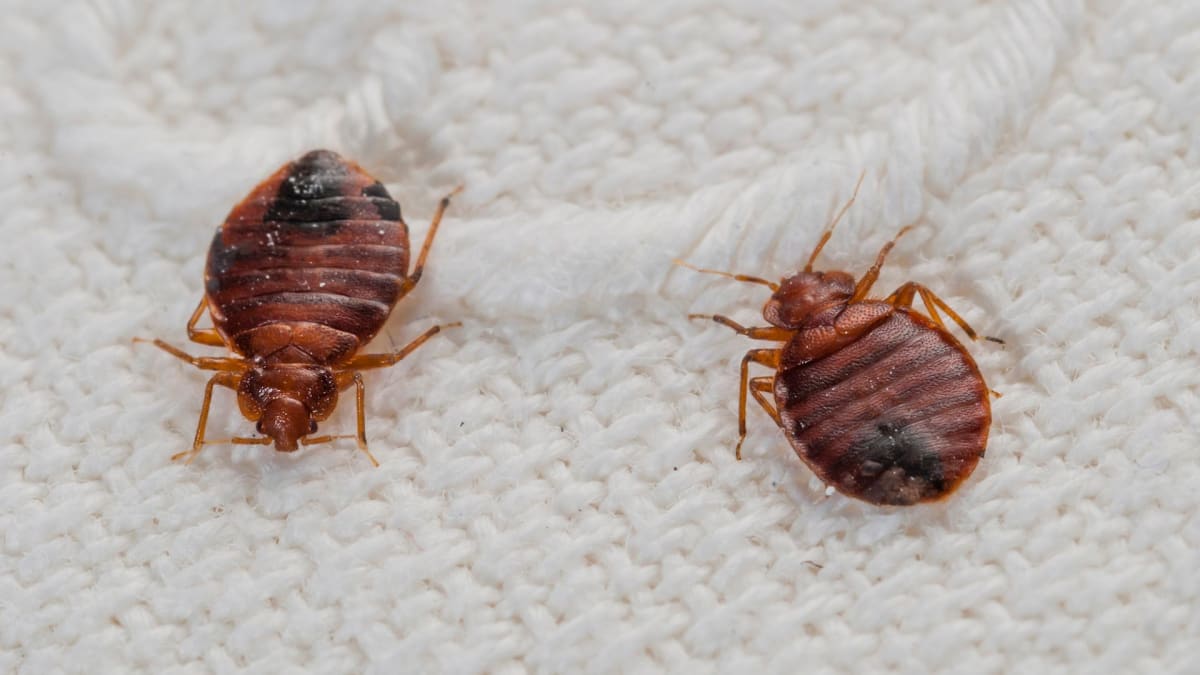Discovering the Science Behind Bed Pest Heat Treatments as a Lasting Insect Monitoring Method
In the realm of parasite management, the pursuit for effective and sustainable options continues to be a constant quest. One such technique that has actually gained traction in the last few years is making use of warm therapies to battle bed bug infestations. By taking advantage of the scientific research behind thermal fatality factors for these relentless parasites, warmth therapies offer a promising alternative to conventional chemical-based techniques. The ins and outs of just how warm properly removes bed pests and the more comprehensive implications for sustainable insect management practices make this a subject worth exploring even more.
Bed Pest Warm Treatment Refine

Thermal Death Point for Bed Pests
Revealing bed insects to elevated temperatures past their thermal resistance variety is essential for achieving effective obliteration in warmth treatment processes. The thermal fatality point for bed bugs describes the temperature level at which these insects can not survive. Study suggests that bed bugs begin to perish when revealed to temperature levels above 113 ° F(45 ° C) for a continual period. As the temperature boosts, so does the mortality price of bed insects. At around 118 ° F(48 ° C ), bed bugs start to die swiftly, with a mortality price of almost 99% within mins of exposure. This shows the sensitivity of bed pests to high temperature levels and highlights the effectiveness of warmth treatments in getting rid of problems. By getting to and maintaining temperatures over the thermal death factor for bed insects, parasite administration specialists can make sure comprehensive elimination of bed pest populations, consisting of hard-to-reach areas where chemical treatments might be less efficient. Recognizing the thermal death factor for bed pests is vital for implementing successful warm therapy techniques and accomplishing lasting pest administration end results.
Advantages of Heat Treatments
Having actually established the important thermal death factor for bed bugs, it is critical to now discover the significant benefits that heat treatments supply in efficiently getting rid of these resilient bugs. One of the primary advantages is that warmth can penetrate deep right into crevices and fractures where bed pests hide, making sure that also the most hard-to-reach areas are heated to deadly temperature levels.
Additionally, warm therapies are eco pleasant and non-toxic, making them a sustainable insect monitoring approach. Unlike chemical pesticides, warmth treatments do not leave damaging deposits that can posture risks to human health or the atmosphere. This element is specifically vital in delicate environments such as medical facilities, institutions, and property locations where chemical usage might not be preferable.
Furthermore, warm therapies have a high success rate in getting rid of bed insect invasions in a single treatment, decreasing the requirement for several check outs and lessening interruption to passengers. This effectiveness not only saves money and time but additionally gives assurance to those managing bed insect issues.
Effectiveness of Heat Therapy

Research study researches have actually regularly demonstrated the performance of warmth treatments in best site accomplishing a high price of bed pest death. Properly conducted heat therapies can reach all the fractures and gaps where bed pests may be harboring, guaranteeing an extensive strategy to elimination. Warm therapies have actually the included benefit of killing bed insect eggs, which are commonly immune to standard chemical therapies. Generally, the efficiency of heat therapies in getting rid of bed pest problems makes them a lasting and trustworthy bug administration technique.
Sustainable Parasite Administration Advantages
Executing lasting parasite management methods uses lasting benefits for both the environment and public health and wellness. By making use of approaches such as heat treatments for insect control, we can minimize the dependence on harmful chemical pesticides that can have unfavorable impacts on environments and human wellness - exterminator near me. Sustainable insect administration methods assist in maintaining biodiversity by targeting details parasites without damaging non-target microorganisms, therefore keeping a read what he said well balanced ecological community
Furthermore, lasting parasite management techniques contribute to the overall health and well-being of the general public. By minimizing direct exposure to poisonous chemicals made use of in standard bug control approaches, warmth therapies offer a safer alternative for parasite monitoring in property, commercial, and public rooms. This decrease in chemical usage also aids in stopping pesticide deposits from polluting air, water, and soil, this page guarding environmental quality.
Verdict
In final thought, bed bug warmth treatments have actually been shown to be a reliable and sustainable insect management technique. The thermal fatality point for bed pests makes them prone to heat therapies, which have numerous benefits over traditional chemical therapies. The effectiveness of warm therapies in eliminating bed pest infestations while decreasing environmental effect highlights the possibility of this technique as a lasting solution for bug control.
The bed pest heat therapy procedure involves increasing the temperature level within infested areas to a degree that effectively gets rid of bed pests and their eggs. By reaching and preserving temperature levels over the thermal fatality point for bed insects, bug management professionals can make sure thorough elimination of bed bug populations, consisting of hard-to-reach locations where chemical therapies might be less effective. One of the main benefits is that warmth can pass through deep into cracks and gaps where bed pests conceal, ensuring that even the most hard-to-reach areas are heated to lethal temperatures. Unlike chemical treatments that may leave behind resistant populations, warm treatments use a safe and eco pleasant option that can pass through deep into furnishings, wall surfaces, and other hard-to-reach locations where bed bugs hide.
The thermal fatality point for bed pests makes them susceptible to heat therapies, which have numerous benefits over typical chemical therapies.